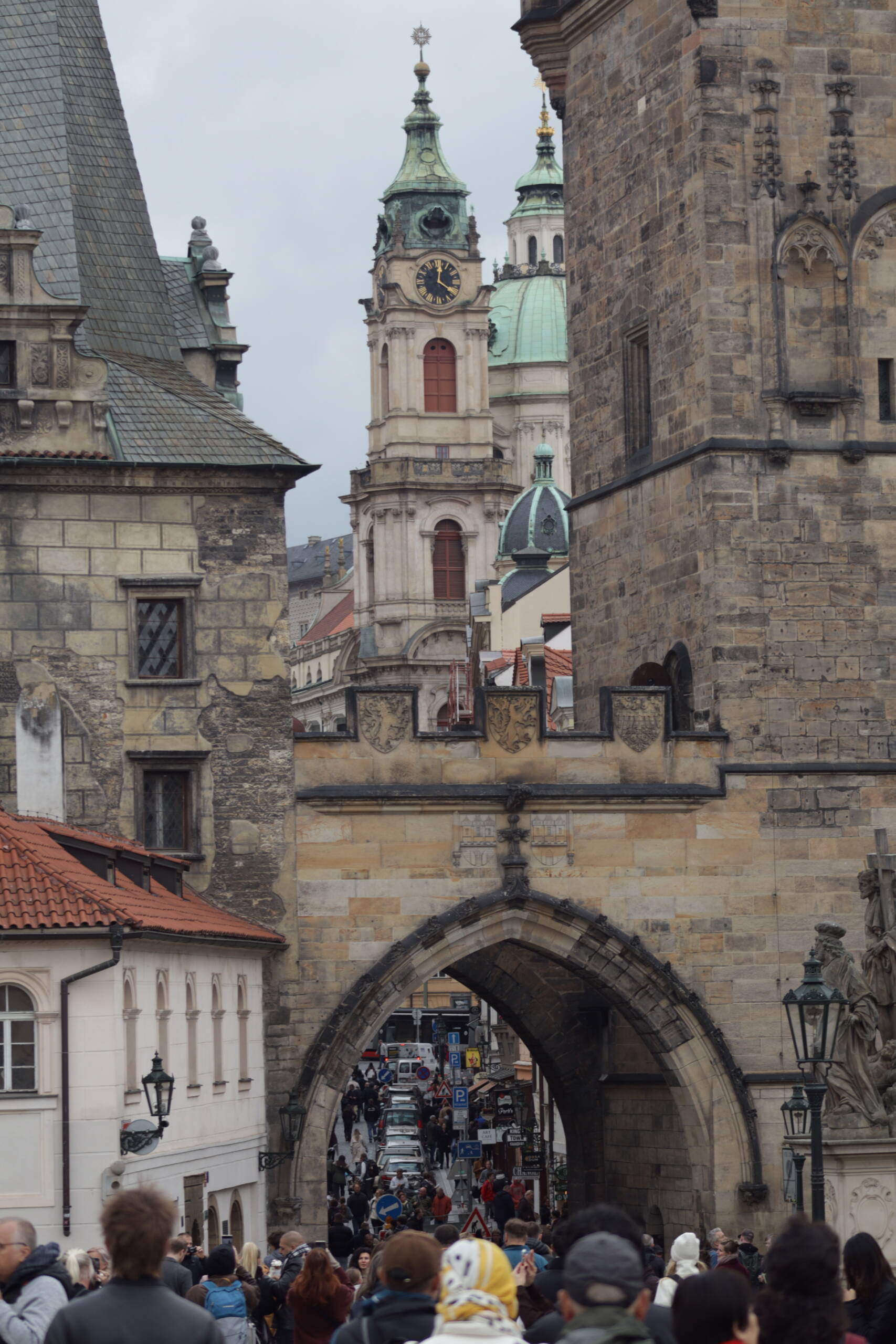The photograph captures one of the most emblematic transitions in all of Europe—a literal passage through centuries of art, architecture, and urban rhythm. The arched gateway in the foreground belongs to the Lesser Town Bridge Tower (Malostranská mostecká věž), the medieval sentinel guarding the western end of Charles Bridge. Built in the late 14th century under Emperor Charles IV, it once marked the edge of the fortified Old Town. Its heavy stonework, speckled with soot and softened by time, tells stories of parades, invasions, and endless crossings between the royal and the ordinary.

Beyond the arch, framed almost like a painting, rises the magnificent Church of St. Nicholas of Lesser Town (Kostel svatého Mikuláše). Its baroque dome and clock tower, both dressed in the unmistakable green of aged copper, are among the crown jewels of Prague’s skyline. The church was built between 1704 and 1755 by the Dientzenhofer family, masters of dynamic, theatrical architecture. Every curve of its dome and every gilded ornament inside was meant to exalt the triumph of the Counter-Reformation, but centuries later, it simply magnifies the grandeur of Prague itself. From this vantage point, the clock face looks down on the constant river of tourists, as if measuring not just time but the unbroken continuity of curiosity that flows through this city.
The street under the arch, packed with people and cluttered with modern signs, is Malostranské náměstí’s narrow artery—an everyday chaos framed by medieval stone. The contrast is almost cinematic: a swirl of umbrellas, backpacks, and selfie sticks beneath the solemn watch of Gothic gargoyles. Yet this tension between the sacred and the mundane, between postcard and reality, is exactly what gives Prague its pulse. Every visitor crossing that bridge is unknowingly retracing the steps of kings who once marched to Prague Castle, and yet they are also participating in the modern ritual of mass travel, the democracy of wonder.
There’s a kind of spatial poetry in how the layers of architecture align here—the Gothic arch leading the eye to the Baroque spire, both resting against a cloudy Central European sky. It’s the perfect distillation of Prague’s identity: a city that never erased its past but allowed it to stack, harmoniously, like musical notes in a long, unfinished composition. Even the weather—grey and moody—feels authentic, amplifying the patina of centuries.
This is not just a photograph of a busy tourist scene. It’s a visual essay on continuity, on how cities remember through stone. And perhaps that’s the real allure of Prague: it doesn’t need perfection. It needs only this—its layers of history, a sky heavy with memory, and a crowd that keeps the story moving forward.
Leave a Reply